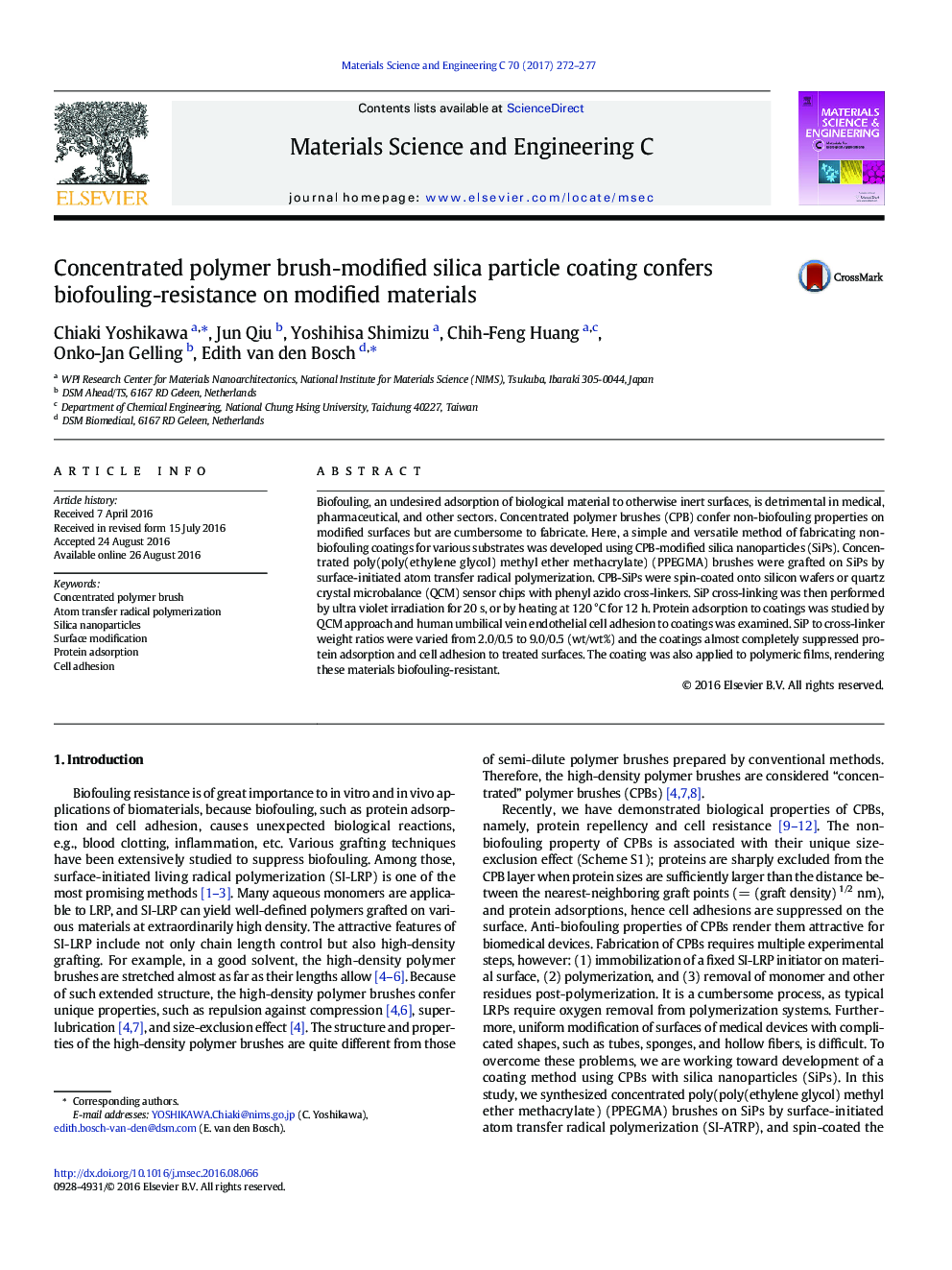| Article ID | Journal | Published Year | Pages | File Type |
|---|---|---|---|---|
| 6481366 | Materials Science and Engineering: C | 2017 | 6 Pages |
â¢A simple and versatile method of non-biofouling coating using polymer brush modified silica particlesâ¢The coatings were easily cross-linked by ultraviolet irradiation or heating.â¢All the coatings showed excellent protein repellency and cell resistance.
Biofouling, an undesired adsorption of biological material to otherwise inert surfaces, is detrimental in medical, pharmaceutical, and other sectors. Concentrated polymer brushes (CPB) confer non-biofouling properties on modified surfaces but are cumbersome to fabricate. Here, a simple and versatile method of fabricating non-biofouling coatings for various substrates was developed using CPB-modified silica nanoparticles (SiPs). Concentrated poly(poly(ethylene glycol) methyl ether methacrylate) (PPEGMA) brushes were grafted on SiPs by surface-initiated atom transfer radical polymerization. CPB-SiPs were spin-coated onto silicon wafers or quartz crystal microbalance (QCM) sensor chips with phenyl azido cross-linkers. SiP cross-linking was then performed by ultra violet irradiation for 20 s, or by heating at 120 °C for 12 h. Protein adsorption to coatings was studied by QCM approach and human umbilical vein endothelial cell adhesion to coatings was examined. SiP to cross-linker weight ratios were varied from 2.0/0.5 to 9.0/0.5 (wt/wt%) and the coatings almost completely suppressed protein adsorption and cell adhesion to treated surfaces. The coating was also applied to polymeric films, rendering these materials biofouling-resistant.
Graphical abstractDownload high-res image (176KB)Download full-size image
